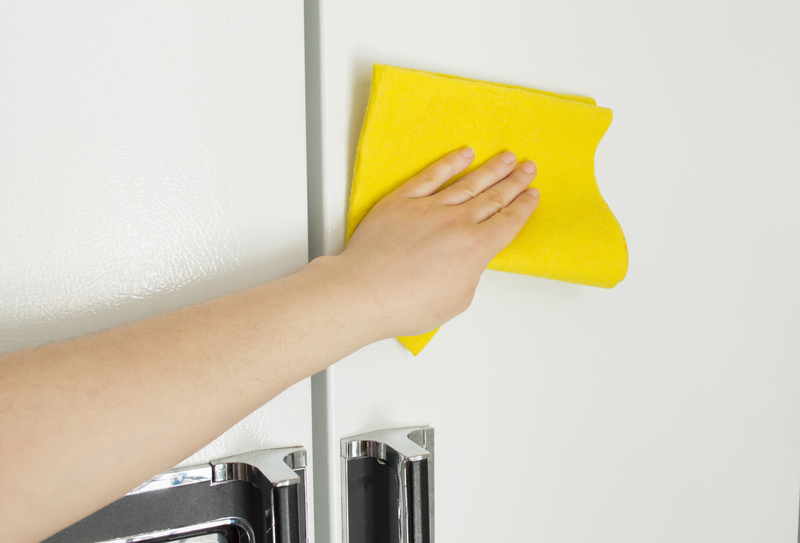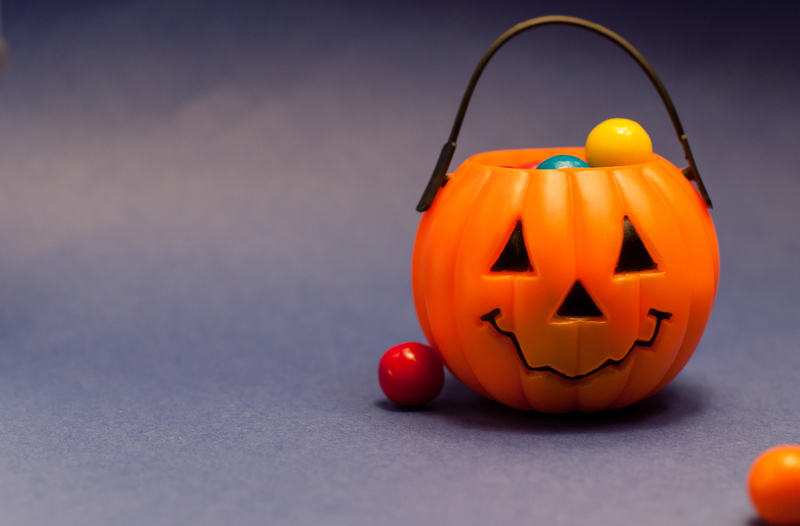Achieve a Mold-Free Bathroom with Simple Steps
Posted on 24/09/2025
Achieve a Mold-Free Bathroom with Simple Steps
Keeping your bathroom mold-free is essential for maintaining a healthy home environment. As one of the most moisture-prone areas in any house, bathrooms become the perfect breeding ground for mold and mildew. Not only can mold ruin your bathroom's aesthetic, but it can also present serious health risks. In this comprehensive guide, you'll discover actionable and straightforward steps to achieve a clean, mold-free bathroom forever.

Why Is Preventing Bathroom Mold So Important?
Mold prevention in the bathroom goes beyond mere appearances. While unsightly black spores on your tiles or ceiling may make you cringe, the real dangers lie beneath the surface. Mold spores can cause various health problems, especially in individuals with allergies, asthma, or compromised immune systems. Common symptoms include coughing, sneezing, skin irritation, and even more severe respiratory issues. Moreover, unchecked mold can damage bathroom fixtures, grout, drywall, and even the structural integrity of your home.
Given these risks, making your bathroom mold-resistant is crucial not only for your comfort, but also the long-term health and value of your home.
What Causes Mold Growth in Bathrooms?
Understanding the fundamental causes is the first step in achieving a mold-free bathroom. Mold thrives in environments where three elements are present:
- Moisture (from showers, baths, and sinks)
- Warmth (common in bathrooms due to steam)
- Organic material (like dust, hair, soap scum, or cellulose in wallpaper)
If you can control these factors, you'll be well on your way to stopping mold before it starts.
Simple Steps to Keep Your Bathroom Mold-Free
1. Improve Bathroom Ventilation
Effective ventilation is the cornerstone of a mold-resistant bathroom. Moist air from showers and baths needs to be removed quickly. Try these practical solutions:
- Use an exhaust fan: Make sure your bathroom is equipped with a high-quality exhaust fan. Turn it on every time you shower or bathe and leave it running for at least 20 minutes after you're done.
- Open windows: If your bathroom has a window, crack it open to allow fresh air inside. Cross-ventilation helps speed up the drying process.
- Leave the door open: After using the bathroom, leave the door open to promote air flow and reduce excess humidity.
- Install a dehumidifier: In persistently humid climates, a small portable dehumidifier can work wonders.
2. Reduce Excess Moisture Immediately
Every drop of moisture fuels mold growth. *Get into the habit of minimizing lingering water in your bathroom with these tips:*
- Squeegee shower walls and doors: Water left on tiled surfaces or shower doors is a breeding ground for mold. Use a squeegee to wipe walls, doors, and tubs after every use.
- Wipe down sinks and counters: After washing up, quickly towel-dry the vanity area.
- Avoid leaving wet towels or rugs in the bathroom: Hang them to dry outdoors or in a well-ventilated laundry room.
- Keep shampoo bottles and soap dishes dry: Mold can flourish in damp, hidden spaces. Make sure your shower caddies and accessories remain dry between uses.
3. Fix Leaks Right Away
Leaky pipes, faucets, or toilets are a major source of hidden moisture. Even a minor leak can lead to significant mold issues over time.
- Check under sinks and behind toilets: Look regularly for seeping water, pooled moisture, or rot.
- Seal grout and caulk: Inspect and replace crumbling or missing grout and caulk around tiles, sinks, bathtubs, and showers. *These barriers keep water from reaching drywalls and floors.*
- Address plumbing issues promptly: Never postpone plumbing repairs. Water behind walls or under floors is a surefire way to invite mold into your home.
4. Choose Mold-Resistant Materials
Building or remodeling? *Opt for products specifically engineered to resist moisture and mold.*
- Mold-resistant drywall: Unlike standard drywall, these panels contain fiberglass facing that resists moisture absorption.
- Mold-resistant paint: Look for paints labeled "mildew-resistant" or "bathroom paint," which contain antimicrobial agents.
- Tiles and non-porous surfaces: Ceramic, porcelain, or glass tiles are less likely to absorb water compared to porous alternatives.
- Silicone caulk: Silicone-based caulk is less likely to crack and let in water than acrylic or latex varieties.
5. Regular Cleaning and Maintenance
Consistent cleaning is one of the most effective ways to maintain a mold-free bathroom. Here's how to keep surfaces spotless and fungi-free:
- Scrub tiles and grout weekly: Use a mild detergent or a mixture of vinegar and water for a natural solution.
- Disinfect all surfaces: Clean countertops, sink basins, and toilets with a disinfecting spray to kill lingering spores.
- Wash shower curtains and liners: Machine-wash or replace plastic liners every few months to prevent mildew buildup.
- Empty and clean trash cans regularly: Mold can grow in organic waste left for too long.
6. Inspect for Hidden Mold
Sometimes you won't notice mold right away. Check these often-overlooked areas:
- Behind and under sinks
- On the underside of shampoo bottles or soap dishes
- Along window frames or behind mirrors
- Inside air vents
If you notice a musty odor, that's a telltale sign mold may be lurking somewhere out of sight.
Natural Solutions to Eliminate Bathroom Mold
If you spot early signs of mold, you don't have to reach immediately for harsh chemicals. Try these gentle but effective methods:
- White Vinegar: Pour undiluted vinegar into a spray bottle and apply directly to affected areas. Leave for at least an hour, then scrub and rinse.
- Baking Soda: Mix a tablespoon of baking soda with water to form a paste. Use it to scrub mold off grout and tiles.
- Hydrogen Peroxide: Spray a 3% hydrogen peroxide solution onto mold, wait 10 minutes, then scrub away with a brush.
- Tea Tree Oil: Add a teaspoon to a cup of water, spray, and leave to dry--no rinsing needed. This is a natural antifungal remedy.
For tougher stains or large infestations, you may need to use commercial mildew removers or call in professionals. Always wear gloves and ventilate the area when cleaning mold.
Design Choices That Help Achieve a Mold-Free Bathroom
The design of your bathroom can play a large role in how easy it is to keep it mold-free. Here are some ideas to consider if you're renovating or building new:
- Install a walk-in shower: Eliminating traditional shower curtains can help by reducing moist surfaces.
- Choose glass doors: These surfaces are less absorbent than fabric and easier to clean.
- Opt for floating vanities and wall-mounted toilets: These provide more open floor space that's easy to keep dry and clean.
- Use larger tiles: Larger tile means fewer grout lines--less room for mold to take hold.
- Add a heated floor: Heated bathroom floors help evaporate standing water quickly, keeping surfaces dry and unwelcoming to mold spores.
FAQs About Keeping Your Bathroom Mold-Free
1. How often should I clean my bathroom to keep mold away?
At least once a week. Regular cleaning of tiles, grout, sinks, and other surfaces helps keep mold at bay. Quick daily touch-ups, like squeegeeing the shower, will make weekly deep cleaning easier.
2. Can bathroom mold cause serious health issues?
Yes. In addition to allergies and irritation, toxic mold can trigger more severe respiratory problems--especially in sensitive individuals. Infants, older adults, and those with chronic illnesses are particularly at risk.
3. Is it safe to use bleach for mold removal?
Bleach can kill visible mold, but it doesn't always penetrate porous surfaces, so hidden spores may remain. Use bleach with caution, in a well-ventilated area, and never mix it with ammonia or other cleaners.
4. What is the best way to prevent bathroom mold?
Preventing mold in the bathroom is an ongoing process. Prioritize ventilation, fix leaks, clean regularly, and stay vigilant for signs of moisture or damage.
Common Mistakes That Lead to Bathroom Mold
- Ignoring small leaks: Even a tiny, slow drip can create hidden moisture problems over time.
- Skipping the exhaust fan: "Quick" showers still produce steam. Always run the fan to remove humidity.
- Letting wet towels and bath mats stay in the bathroom: Hang them up elsewhere to prevent mildew buildup.
- Using the wrong cleaning products: Some cleaning solutions may not be strong enough to kill stubborn mold spores. Always use products formulated or proven for mold removal.
- Cluttering the shower: Too many products on shelves or caddies prevent surfaces from drying out quickly.
When Should You Call a Professional?
Sometimes, DIY solutions may not be enough. If you encounter any of the following, it's best to consult a professional mold remediation company:
- Mold covers an area larger than 10 square feet.
- Mold has penetrated porous surfaces (like drywall or insulation)
- You notice persistent musty odors even after cleaning
- Mold is found around HVAC vents or in crawl spaces beneath or above the bathroom
Professionals can safely remove all traces of mold and help you identify and eliminate the root cause.

Final Thoughts: Enjoy a Mold-Free Bathroom Year-Round
Achieving a mold-free bathroom is both possible and practical. By combining preventive habits, proper cleaning, smart ventilation, and timely repairs, you'll create a healthy and inviting space for your family and guests. Pay close attention to moisture--mold's best friend--and act quickly to eliminate it wherever it lurks.
Remember: Consistency is key! With these simple, actionable steps, you'll maintain a bathroom that's not just clean, but also truly mold-free.
Summary: The Path to a Mold-Free Bathroom
- Ventilate after every shower and bath
- Keep all surfaces dry
- Clean frequently and address early signs of mold
- Fix leaks right away
- Choose mold-resistant materials if you're renovating
Make these habits part of your routine, and you'll effortlessly achieve a bathroom that stays fresh, clean, and free from mold all year long!




